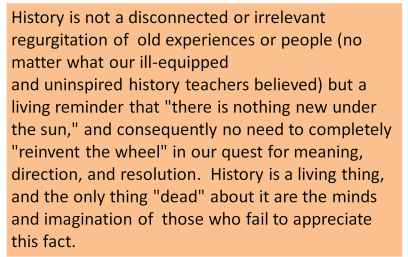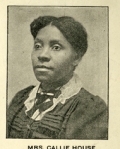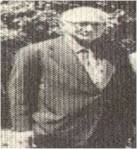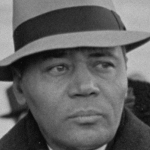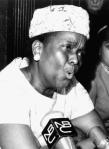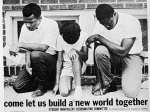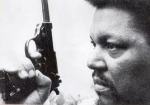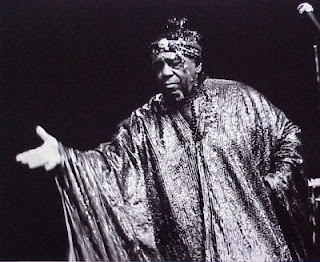
Yityish Aynaw. (Collage Tablet Magazine; original photos Daniel Estrin)
For anyone familiar with the saccharine judges of America’s prime-time beauty pageants, it might be jarring to hear how the director of Israel’s national competition describes Yityish “Titi” Aynaw, the Ethiopian-born 21-year-old who was just crowned Miss Israel. “I think she was not the most beautiful, by classic beauty,” said director Iris Cohen, comparing her to the 19 other finalists in this year’s competition. But she does give Aynaw this: “She stands on the stage and you cannot ignore her.”
The new Miss Israel is just as blunt. Sitting with her last week in the green room at the Tel Aviv offices of La’Isha magazine—the Israeli equivalent of Vogue and sponsor of the annual pageant—I told her about the stereotypical American beauty queen who seeks to impress the judges with her earnest hopes for world peace. “To say a sentence like that, in my opinion, is to sound retarded,” Aynaw replied. Then she stopped and wondered out loud if she should have said that. She changed “retarded” to “stupid,” and barreled on. “Iran is trying to develop a nuclear weapon, China is trying to become a superpower,” she said. “To say that I want world peace, of course I want it. It’s a dream. But I don’t think it will happen now.”
Israelis are better known for their grit than their grace, but Aynaw’s got both. Almost 30 years since the first clandestine Israeli airlift of Ethiopian Jews—the fabled descendants of the lost biblical tribe of Dan—to the Promised Land, the Jewish state has finally anointed one of them Israel’s most beautiful woman. Asked by judges why she deserved the title, Aynaw said it was about time that a black woman wore the crown.
I met Miss Israel a day after one of her first solo photo shoots. Aynaw was wearing a blue sleeveless dress with silver studs lining the shoulders. She teetered a bit in gold-strapped heels, but confidently strutted down the hallways of the magazine offices, one slender leg cutting across the other like scissors. Measuring in at 5 foot 9, not including her bun, she towered over the rest of the magazine’s editorial staffers, who congratulated her as she walked past their offices. She attributes her beauty to her Ethiopian heritage. “We have these chiseled faces. Everything is in the right place,” she said. “I never saw an Ethiopian who was stuck with some big nose.” She looks like a fiercer version of Tyra Banks, one of two role models she named in the competition. The other one was Martin Luther King.
***
The Miss Israel pageant has been held uninterrupted for the last 63 years. That’s a startling feat in a country only 65 years old, in a culture that typically rejects pomp and circumstance, and where most long-standing annual events commemorate tragedy and war. The late Hemda Nofech-Mozes, who married into the country’s most powerful media family, founded La’Isha magazine a year before Israel’s war of independence in 1948 and instituted the competition two years later. “Everyone was talking about war, everyone was talking about settlement. She said, wait a minute, there is a nation here … there are beautiful women,” said Cohen, the current pageant director.
You can learn a lot about the face Israeli society has tried to put forward by the faces its judges choose each year. In 1952, at the height of tensions between Israel’s European veterans and Middle-Eastern Jewish newcomers, Yemen-born Ora Vered became the first Miss Israel of Middle-Eastern Jewish descent. In 1993, in the midst of Israel’s tidal wave of Soviet immigration, Kiev-born Jana Khodriker won, and in 1999, the peak of Israel’s optimism that Arab-Israeli peace was imminent, judges crowned Rana Raslan the first Arab Miss Israel.
In the early days of the competition, each Miss Israel cast away her ethnic name for pure Hebrew ones; Israel’s first beauty queen, Miriam Yaron, was born in Germany as Giselle Freilich, while Ora Vered’s original last name was the Yemeni name Jamili. Similarly, in the last 30 years, many Ethiopian newcomers have adopted Hebrew names.
Not Aynaw, whose given name is connected to the circumstances of her birth. “I was born sick, but my mom believed I had a future,” she told me. Yitayish is Amharic for “look,” or as Aynaw explains it, “looking toward the future.”
“I’d never change my name,” said Aynaw. “Ever.”
Aynaw’s biography is, as she calls it, a Cinderella story. Born in a small township near Gondar in northwest Ethiopia, she was orphaned by age 10. Her father died a year after she was born—she never found out how—and a decade later her mother died of a sudden illness. Her mother’s parents, who had already uprooted to Israel in 2000, arranged for her and her brother to move, too.
Aynaw grew up like many Ethiopian Jews, dreaming of going to Israel. “I was told this was the land of milk and honey,” she said, laughing. “That I’d go on the street, bend down, and pick up golden coins. I’d open the faucet and milk would pour out.”
In March 2003, Aynaw and her brother flew via Kenya to Israel. Her grandparents, whom she had hardly remembered, brought them to their hardscrabble immigrant neighborhood in the seaside town of Netanya. Without knowing a word of Hebrew, she was shuffled off to a religious Jewish boarding school in Haifa catering to new immigrants. Today her Hebrew is accentless and expressive. “They threw me into the deep water. But that’s how you learn to swim the best,” she said.
In fact, Aynaw stood out from the pack from the beginning. She became student council president, excelled in track and field, and won first place in a national student film competition. Her short feature film, which she wrote and directed, told the story of an Ethiopian immigrant girl in Israel who tried to ignore her heritage—a character she says was based heavily on her classmates. When Aynaw would show up in a traditional Ethiopian white kamis as her costume for the Purim holiday, or when she brought homemade injera bread to school, her Ethiopian-born peers became embarrassed. “We immigrants want to integrate into society. And we forget where we come from,” she said.
After graduation, Aynaw, then 19, joined an army course that trains talented Ethiopian-born Israelis to be military commanders. She missed the cutoff date to be in Karakal, Israel’s co-ed combat unit, so she ended up a military police commander responsible for 90 rowdy soldiers. In their three-month training, she taught her soldiers how to fire a weapon, perform security checks at checkpoints, and detect bombs. “For three months, they would never see my smile,” she said, flashing a grin that’s hard to imagine she once concealed.
“I taught them to be human,” Aynaw said of her soldiers, who checked Palestinians driving through military checkpoints. “My soldiers would ask, ‘How can I be so nice when there were instances of a 9-year-old kid or a pregnant woman blowing themselves up at a checkpoint?’ ” She’d tell them: “There are many Palestinians who have a wife waiting at home, a family waiting for dad to bring bread home.”
In October 2012, while most of her friends traveled to popular post-army destinations in India and Thailand, Aynaw spent the savings she’d earned in the army on a ticket to Addis Ababa. She wanted to come to terms with her mother’s death and face her history. “I never looked at her photos, I never talked about her. I decided to erase everything,” she said. It was a defense mechanism: “I needed to succeed,” she added. “I don’t have parents that I can crash with till I’m a 40 year old.”
A distant relative brought her to the Jewish graveyard where her mother is buried. She was shocked by the condition of the cemetery: Headstones were cracked, and rainwater would flow in streams around the graves. She hired the groundskeeper to cover her mother’s grave with marble, to add a Hebrew verse from Psalms next to the Amharic inscription, and to encase the grave in a roofed structure. She waited three weeks in Addis until it was completed. Aynaw showed me photos of the refurbished grave on her cracked iPhone screen.
“Poor thing, I’m upsetting you with my stories,” Aynaw said to me suddenly. She adjusted the large sunglasses on her head, and we switched topics to a recent photoshoot in the Mediterranean sea, when photographers struggled to make her hair look drenched. “How do you give me a wet look? I have an Afro!” she said.
***
Aynaw’s win comes after a year of rekindled accusations of racism toward Israel’s Ethiopian Jewish community. Ethiopian Jews took to the streets in January 2012 to protest after Israeli landlords in a low-income southern town refused them rent. And a month before, Ethiopian Jewish spiritual leaders made noise after Israel’s rabbinate announced it would phase them out because their customs run against normative Orthodox Judaism. Aynaw’s victory certainly has its critics; some say she won because of her skin color alone. Others have posted derogatory jokes on Facebook, like calling her “toffee queen,” instead of yoffee (Hebrew for beauty) queen, or saying that it was too bad her poor family couldn’t watch the pageant because they don’t own a television. “Tell me I’m ugly. That would hurt less,” she said of the racist jokes.
And yet, these past few years have been trailblazing ones for Ethiopian-born Israeli women. In 2011, Hagit Yaso was the first Ethiopian-born winner of the Israeli version of American Idol. In 2012, Belaynesh Zevadia was appointed Israel’s first Ethiopian-born ambassador, sent to represent the Jewish state in her native Addis Ababa. And in January, Pnina Tamano-Shata became the first Ethiopian-born woman to be elected to parliament. “There is hope that Israeli society has gotten a little bit more open,” said Semai Elias, a spiritual leader in the Ethiopian Jewish community, about their accomplishments. “The community has been given a chance.”
Still, there are virtually no black faces on Israeli billboards and in magazine ads. That should change with Aynaw’s expected appearances in ads by Israeli casual-wear line Golf and high-end jewelry seller H. Stern, co-sponsors of the pageant. Aynaw also wants to make a social impact during her tenure: She wants to institute dance and drawing activities for Ethiopian kids like those in her immigrant neighborhood who roam the streets after school. Someday, she wants to be an Israeli diplomat.
Aynaw will get a taste of foreign relations this year: This week she flies to New York to address a gala at the Waldorf Astoria for the Friends of the Israeli Defense Forces. This winter, she’ll be in Paris. And pageant director Cohen says organizers of this year’s Miss World competition in Indonesia—a country with which Israel shares no diplomatic relations—are working on securing a visa for her to compete.
If Aynaw makes it to the international competition, she’ll be asked to strut down the runway wearing her national dress. Japan has kimonos, and Brazil has carnival costumes. But what gown represents the melting pot of Israel?
This year, that decision will be easy for Israeli fashion designer Berta, said Cohen. “Berta will go with an Ethiopian theme,” she said.
***
Daniel Estrin is a print and radio journalist. His stories have been featured in outlets including The Associated Press, The Atlantic, NPR and Public Radio International.












